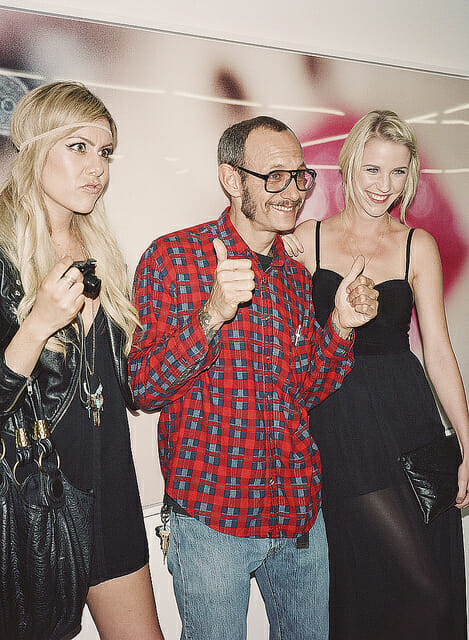Why the House of Skeeveball Still Stands

Late last year, I wrote a lengthy essay in this space postulating that Rupert (“silver Fox”) Murdoch’s 5 percent purchase of bad-boy Shane Smith’s MULTIMEDIA EMPIRE VICE (sic, more or less) was a mere token of a changing mentor/mentee relationship we would do well to keep a sharp eye on.
That the multi-headed and super-rapey cross-platform media hydra would further beat down/off the well-trodden path that both entities had formed by relying on racist and misogynist content was clear. But that it would enlist surprising new allies in the struggle to degrade consumer intelligence and assert white male supremacy was slightly more speculative. Still, I was right on both counts, so kudos to me! (Sorry, All Women.)
The most concerning of these new allies is the City of New York, who offered the company a sweet tax credit to move into a 60,000-square-foot space in the Williamsburg neighborhood of Brooklyn. The building needs a $15 million renovation, of course, but will apparently allow for another 525 employees—who, at least on the publishing side, will support a contributor base that is 73 percent male.
The announcement of the city’s support for the growing “journalism” brand came hot on the heels of—and was totally overshadowed by—the resurgence of Vice alum Terry Richardson’s penis. No, not his actual penis, which has just sort of been around for years but his metaphysical one. (Unless you were modeling for him, perhaps, in which case: real penis.) For in mid-June, New York magazine successfully shifted public debate from, “Why does the fashion industry tolerate a sexually abusive photographer despite repeated and public harassment claims?” to, “Why does this totally amazing fine artist with a troubling childhood keep getting wrongly accused of being too sexy?”
It’s a clever move, to position a real and important debate about women’s autonomy within the fashion industry as an issue of men’s rights. But no one is falling for it. Molly Lambert at Grantland, for example, correctly states the problem:
Whatever your opinion is of Richardson’s brightly exposed white-wall portraits, sometimes explicit personal work, and provocative fashion photography should be irrelevant to the question of whether he should continue to be hired. If Richardson touches and molests models without their consent, as multiple accounts allege in specific, extremely similar detail, there’s no excuse for his ongoing high status in the photography world.
Such clear-headed thinking about Richardson coincided with the announcement that the equally reprehensible Dov Charney had been fired by the clothing brand he’d founded, American Apparel. Many correctly grasped that the similar events had similar causes. But few noted that the companies have a long, mutually beneficial history.
Vice had been running American Apparel ads since at least as far back as 2006, two years after allegations about Charney became public. That year (2004) also saw the first emergence of rumors about then-unknown Uncle Terry. By 2008, allegations against both men were circulating regularly, and new details emerged—underage victims, degrading acts, and the creation of a generally hostile work environment for young women employees (even those who weren’t literally being coerced into sex with Charney or Richardson).
Their mutuality created a “milieu”—American Apparel sold the attire for the Vice parties we went to back then—but the mirrored allegations also created a sense of inescapability. Yes, Richardson is a disgusting perv, but look at Charney. And vice versa. Forever.
Or, not forever, because in 2013, President Barack Obama posed for Richardson for a second time (the first was in 2007), whereupon the country engaged in a national and heated debate about whether or not it’s appropriate for a sitting American president to support the career of man repeatedly accused of sexual violence. Oh wait.
And so we return to the media’s focus on Charney’s firing and the backlash against Richardson. The structures of support that underlie the systems that create such monsters—the City of New York, the fast fashion industry, and the offshore production against which American Apparel’s domestic production is set—get a pass.
Unfortunately, in the end, the Fall of the House of Skeeveball didn’t even damage the structure’s girders. I mean, come on: only Charney sustained any direct hits, and he’ll likely get over it with a book deal or a heavily-funded doc appearance. Richardson just gets more street cred in a media environment increasingly created by the aforementioned bros at Vice and Fox.
So while The Fall of the House of Skeeveball has been heralded as the end of hipster misogyny, nothing has really changed. And it doesn’t look like it ever will: The City of New York’s tax deal won’t be the last hinky act of publicly funded support Vice gets. (Although they’ll do okay even if it is.)
Big brands and major mags—even women’s mags—won’t stop hiring Richardson, because in a world where name recognition counts, the ethics behind it doesn’t. And both fast fashion and its supposed alternative, American Apparel, will continue to rely on hypersexualized images of women, even if the level of sexual harassment in the office may take a temporary blow once Charney’s desk is cleaned out. Because that is just what the fashion industry—which Vice relies on, and fosters, too—does.
Sorry again, All Women.